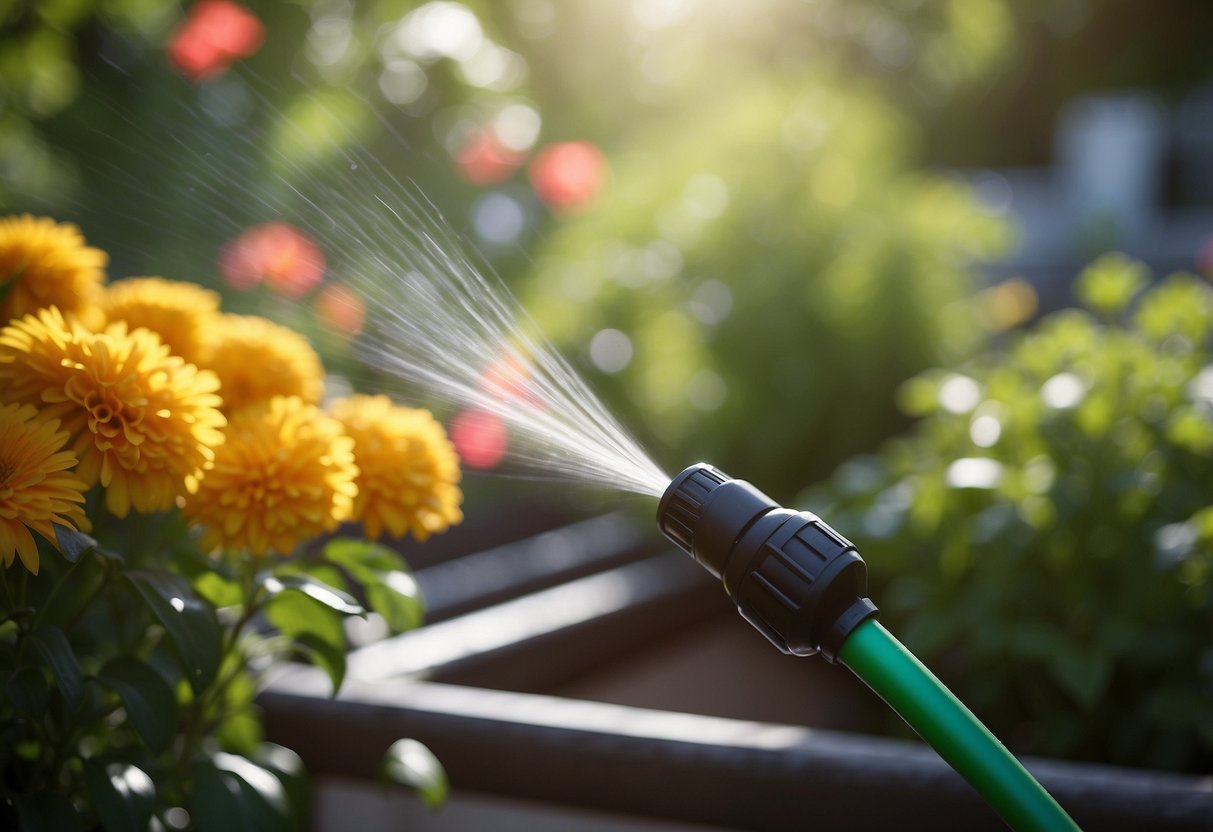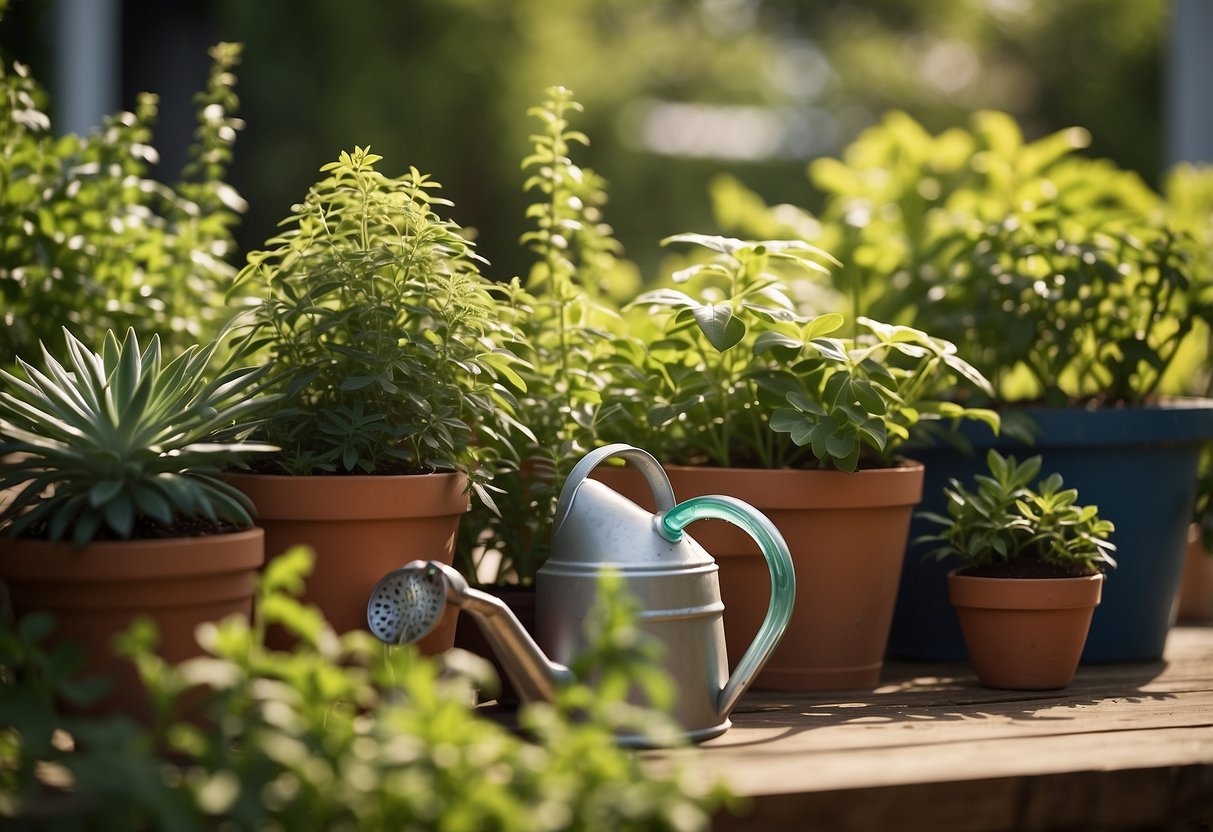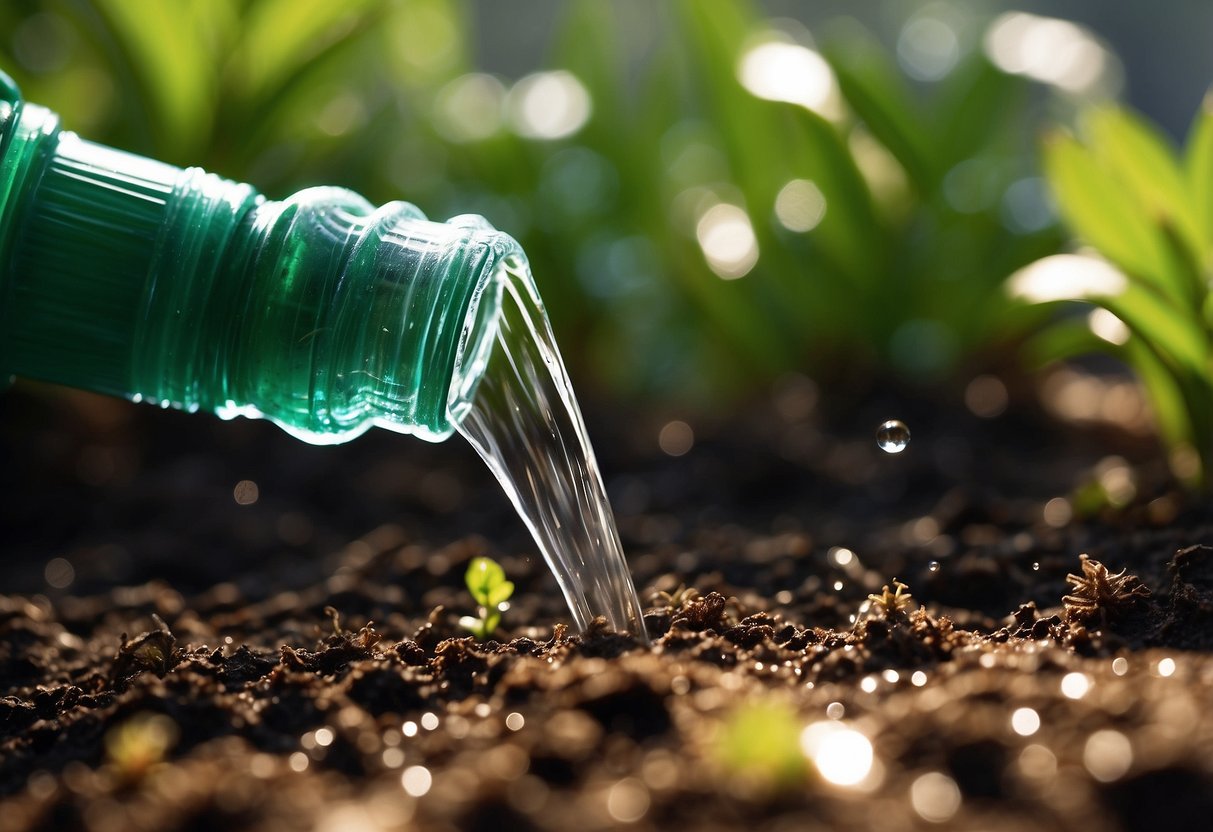Summer Garden Watering Tips: Keep Your Plants Thriving
Keeping your garden healthy during the hot summer months can be a challenge. Your plants need the right amount of water to thrive, but too much or too little can cause problems. Knowing when and how to water can make a big difference in your garden’s overall health.

Are you wondering how to keep your plants happy and lush throughout the scorching summer days? With a few simple tips and techniques, you can ensure that your garden stays vibrant and beautiful all season long. Whether you’re a seasoned gardener or just starting, these tips will help you manage summer watering with ease.
1) Water early in the morning

Watering your garden early in the morning helps reduce water loss due to evaporation. The cooler temperatures and calm winds allow water to soak into the soil efficiently.
Plants have time to absorb water before the heat of the day kicks in. This timing also helps prevent diseases that can spread from wet leaves in the evening.
Aim to water around sunrise for the best results.
2) Use a soaker hose

A soaker hose is a great way to water your garden efficiently. It delivers water directly to the soil and roots without wasting it on leaves.
Lay the hose on the ground around your plants. Turn the water on at a low pressure for even soaking.
Check for leaks and clean the hose regularly to keep it working well. Learn more about using a soaker hose at this complete guide.
3) Mulch Your Garden Beds

Mulch is great for keeping your soil cool and conserving water. It helps reduce water loss and can even suppress weed growth.
Always check if your mulch becomes compacted. When it’s too dense, water may not reach the soil effectively.
Consider using organic mulches like wood chips or straw. Avoid using rocks as mulch, as they heat up quickly and can harm your plants.
4) Install a Rain Barrel

Installing a rain barrel is a great way to collect rainwater for your garden. Start by removing the downspout from your gutter. This will allow rainwater to flow directly into the barrel.
Place the rain barrel on a level surface near your garden. Make sure it has a spigot at the bottom to release water. You can use the collected water to keep your plants hydrated during dry spells.
A rain barrel can be fitted with a simple pump to increase water pressure, ensuring your garden gets enough water. For more tips, check out this guide on setting up a rain barrel.
5) Water deeply, not frequently

Watering deeply encourages plants to grow strong roots. Instead of giving a little bit of water every day, it’s better to water your garden thoroughly every few days. This helps the water reach deeper into the soil.
When you water deeply, the moisture soaks in, allowing roots to absorb more nutrients. It also makes plants more resilient during dry spells. Watering your plants this way can reduce the risk of diseases and pests. For more tips on proper watering techniques, visit Garden Design’s tips for summer watering.
6) Group plants by water needs

Grouping plants with similar water needs helps make watering your garden easier. This method, known as hydrozoning, ensures that each plant gets the right amount of water.
Native plants often adapt well to the local climate and usually need less water. This can help save resources.
By grouping these plants together, you can water them less often and more efficiently.
7) Check Soil Moisture Before Watering

Before watering your garden, check the soil moisture. This can help you avoid overwatering or underwatering your plants.
Stick your finger a few inches into the soil near the plant’s stem. If it feels dry, it’s time to water.
You can also use a soil moisture meter for a more accurate reading. This tool measures moisture, pH, and sunlight intensity, helping you care for your garden better.
Properly assessing soil moisture ensures your plants get the right amount of water to thrive.
8) Use Drip Irrigation

Drip irrigation is a great way to keep your garden hydrated efficiently. This method delivers water directly to the base of your plants, reducing water waste and ensuring your plants get the moisture they need.
You can automate your system with a timer, making it hassle-free. Consider adding a manual shutoff valve to control sections that might get too wet.
Regularly check and replace clogged or leaking emitters to maintain water flow. You can also use mulch in your garden to help conserve water and keep soil moist longer. Explore more tips on drip irrigation.
9) Water the roots, not the leaves

When watering your garden, aim for the soil around the base of your plants. This helps soak the roots, where the water is needed most.
Leaves can get wet, but watering foliage can lead to mold or mildew. Plus, water on leaves evaporates quickly, not reaching the roots effectively.
Use a watering can or a soaker hose to direct water to the soil. For more tips on effective watering, check out these expert dos and don’ts.
10) Collect and use rainwater

Using rainwater for your garden is a smart and eco-friendly way to keep your plants hydrated. Set up a rain barrel under your gutter’s downspout to collect rainwater whenever it rains.
You can also use old barrels for a rustic look in your garden. This not only saves money on your water bill but also makes use of a natural resource. Learn more about collecting rainwater from Farmers’ Almanac.
Understanding Plant Watering Needs

Different plants have different water needs. It’s important to know which plants require more water and how to spot signs of watering problems.
Identifying Water-Intensive Plants
Some plants need a lot of water to stay healthy. These include most vegetables, tropical plants, and flowering plants.
Vegetables like tomatoes and cucumbers require frequent watering, especially during fruiting. Tropical plants, such as ferns and hibiscus, thrive in moist environments. Flowering plants like petunias and marigolds also need regular watering to support blooming.
Make sure to water these plants deeply, allowing the moisture to reach their root zones. This helps the roots grow stronger and deeper. Use a soil moisture meter or stick your finger into the soil to feel if it’s adequately moist.
Recognizing Signs of Underwatering and Overwatering
Watching for signs of underwatering or overwatering is key.
Signs of underwatering include dry, brittle leaves that might turn brown. Stunted growth and wilting can also indicate that your plants aren’t getting enough water.
Overwatering can be just as harmful. Look for yellowing leaves, which might signal root rot or suffocation. You might also see mold or fungus in the soil, which means there’s too much water trapped.
Check your soil regularly. If it’s dry an inch below the surface, it’s time to water. If it’s too wet or smells musty, reduce the frequency. Adjusting how and when you water will keep your plants healthy and happy.
Best Times for Watering Your Summer Garden

The time of day and weather conditions are crucial when deciding when to water your garden. Your plants’ health and efficiency in water usage depend on these factors.
Morning vs. Evening Watering
Watering your garden in the morning has several benefits. When you water early, the soil can absorb moisture before the day’s heat evaporates it. This helps roots get the hydration they need. Morning watering also ensures that the foliage dries off quickly, which lowers the risk of diseases.
In contrast, watering in the evening can be convenient, especially if you aren’t an early riser. The cooler temperatures of late afternoon allow water to seep into the soil without evaporating quickly. However, avoid watering too late because wet leaves overnight can promote disease.
Impact of Weather Conditions
Weather conditions also influence the best time to water your garden. On hot, sunny days, watering is most effective either in the early morning or late afternoon. Midday watering can waste water due to evaporation.
During cooler or cloudy conditions, you might need to adjust your schedule. Less frequent watering might be necessary because the soil retains moisture for longer periods. Pay attention to rainfall as well; if it rains, you might not need to water at all.
Use a soil moisture meter to check if your garden needs watering. Aim for moist soil about an inch below the surface. Regular adjustments based on weather will keep your garden thriving.







